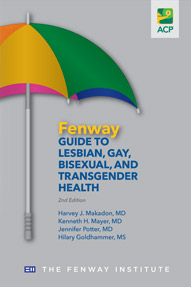Seeking clarity for opioid prescribing
Doctors continue to be frustrated by their patients' chronic pain problems, due to a lack of evidence on opioids' long-term effectiveness and strong evidence of potential harms.
As doctors struggle to ease the chronic noncancer pain of their patients, they continue to be stymied by the relative lack of evidence regarding long-term effectiveness but strong evidence of potential long-term harm of opioids.
An evidence review and a position paper published online in January in Annals of Internal Medicine provide some insight into potential approaches to this dilemma. They stemmed from a National Institutes of Health workshop convened in September 2014 that tackled the evidence and limitations of what's understood about the chronic use of opioids, which are taken by as many as 8 million Americans for long-term pain management.

More research is desperately needed to figure out who is more likely to benefit and who is vulnerable to harm, along with what other pain relief strategies are worth pursuing, according to the independent panel that published its position paper in Annals after reviewing evidence generated by the workshop. The original scope of the review was limited to questions regarding chronic use of opioids, with no direction offered as to best use of opioids for acute and subacute use or approaches to preventing inappropriate chronic use.
Most dauntingly, the panel members wrote, “evidence is insufficient for every clinical decision that a provider needs to make about the use of opioids for chronic pain, leaving the provider to rely on his or her own clinical experience.”
In short, “We're asking doctors to do something that's an impossible task,” said panel member David Reuben, MD, FACP, lead author of the Annals position paper and chief of the geriatrics division at the David Geffen School of Medicine at the University of California, Los Angeles. The panel did find that some patients may gain substantial pain relief from opioids without adverse effects. The dilemma, Dr. Reuben said, is figuring out who falls into that group. “Nobody knows who the subset is,” he said.
However, data from randomized trials often miss harms that have been clearly demonstrated in population-based observational studies, such as dependence, addiction, and overdose events, said Gary M. Franklin, MD, a neurologist at the University of Washington in Seattle and medical director of Washington state's workers' compensation system. And with tens of thousands of patients already on chronic opioids, often at high doses, what should a practitioner do?
It doesn't mean that doctors should strand suffering patients, said Dr. Reuben and other experts. With care and frank communication, some degree of relief for those in chronic pain is achieveable, said Daniel Alford, MD, FACP, an associate professor of medicine at Boston University School of Medicine who also directs the Clinical Addiction Research and Education Unit at Boston Medical Center.
Doctors already handle challenging drugs, such as prescribing warfarin or starting a patient with diabetes on insulin therapy, Dr. Alford said. “We can't rely on just a few docs who are willing to do this,” he said. “We need to all share in this and take this on as a challenge. We're smart. We can do this.”
Quantifying pain
One problem is that there is no substantial evidence that would allow a physician to accurately identify patients who may benefit from but not be harmed by opioids. With the evidence so weak on long-term effectiveness, it may be best to look to alternatives to opioid therapy, Dr. Franklin said.
As opioid prescribing has escalated since the 1990s, so have overdoses and other adverse effects. The rate of opioid-related poisoning deaths nearly quadrupled over a dozen years, from 1.4 per 100,000 people in 1999 to 5.4 per 100,000 people in 2011, according to federal data published in September 2014. By 2011, 41% of drug-related poisoning deaths, or nearly 17,000, involved opioids.
Although some who abuse prescription opioids obtain drugs through friends and family, an analysis published in the May 2014 JAMA Internal Medicine found that doctors were a key source for chronic abusers. Among nonmedical users of opioids who had been taking the drugs for at least 200 days, 27.3% were getting them through a prescription.
Meanwhile, any insights into the effectiveness of the drugs are limited by the paucity of long-term studies, reported the authors of the evidence review that accompanied the Annals position paper. No randomized study comparing an opioid with a placebo or a nonopioid therapy has evaluated long-term outcomes of more than a year involving pain, function, or quality of life. Dr. Alford pointed out, however, that “the issue is absence of evidence rather than evidence of absence.”

A Cochrane review published in 2010 reached a similar conclusion, finding that of 26 studies reviewed, only 1 was a randomized trial and it compared 2 opioids. Two of the longer-term studies cited in the Cochrane review did find that 44% of participants achieved at least a 50% reduction in pain across a period of 7.5 to 13 months, Dr. Alford noted. Dr. Franklin added that in this and other recent systematic reviews, pain relief has only been modest and substantially improved function has been lacking.
According to the Annals position paper, there is some indication that not all pain pathways are equally responsive to opioids, and some might respond better to other types of medication. For example, patients with peripheral nociceptive pain caused by tissue damage or inflammation, such as an injury or rheumatoid arthritis, might be more likely to respond to an opioid. Individuals whose pain involves processing disturbances in the brain and spinal cord, such as fibromyalgia, tension headache, or temporal-mandibular joint disease, might respond better to other compounds, such as antidepressants or anticonvulsants. Also, Dr. Franklin said, there is no clear-cut evidence of effectiveness for opioids in these conditions.
Not only is pain highly subjective, it can have psychological as well as physical aspects, particularly as time progresses, Dr. Reuben said. “One of the things that I think was really important that I learned was that as pain becomes more chronic, there is always a central component,” he said. “The pain becomes a part of your life. The pain experience may be more intense and affect you more than somebody who doesn't have pain all the time.”
And, Dr. Franklin added, it is this centralization of pain that also makes treatments that address psychosocial barriers to recovery and have strong evidence of effectiveness in multiple chronic pain conditions attractive.
Even the definition of what constitutes chronic versus acute pain varies significantly, complicating research, according to the authors of the Annals position paper. Definitions range from pain persisting more than 3 months to that persisting more than 6 months, and some guideposts are even vaguer, they wrote. The American Academy of Pain Medicine describes pain as chronic if it doesn't recede in the expected period of time.
Reducing risk
One of the biggest roles that doctors can play in forestalling chronic opioid use is to think twice about prescribing the drug class for mild to moderate acute pain, said Dr. Franklin. Prescribing an opioid for more than 7 days within the first 6 weeks after an acute low back injury roughly doubles the likelihood that the employee will be on disability a year later, according to a study Dr. Franklin coauthored that was published in 2008 in Spine.
“The evidence on harms is huge. And the evidence on effectiveness long term is not much,” said Dr. Franklin, who also authored the American Academy of Neurology's position paper on opioids for chronic noncancer pain, which was published in Neurology in 2014. Headaches, lower back pain, and fibromyalgia are several examples in which an opioid should ideally be avoided if the pain is mild to moderate, he said. Even if the pain is severe at times, then low-dose, intermittent use of short-acting opioids may be the most effective and safest route.
A stepped-care approach, such as that being implemented in the VA system, can be adopted to try to avoid later opioid difficulties in the wake of common medical problems, such as back pain, Dr. Franklin said. Start with a less risky medication such as a nonsteroidal anti-inflammatory drug and educate the patient about nondrug strategies, such as slowly increasing activity after perhaps a few days of bed rest, he said.
Ask patients to keep an activity log, one that they can bring in to the doctor or physical therapist to stay accountable for how much they moved or walked from one week to the next, Dr. Franklin said. Cognitive behavioral therapy might be beneficial in improving self-efficacy and in overcoming mental hurdles that might impede recovery, such as fear avoidance, low expectations, or catastrophizing, he said.
Dr. Alford agreed that as a general rule other treatments should be attempted before moving to opioids. Given the sometimes multidimensional profile of chronic pain, a doctor might be able to prescribe a combination of drugs at lower doses that together can provide better relief, he said.
As one example, he cited a study published in 2005 in the New England Journal of Medicine, which determined that gabapentin and morphine taken in combination were more effective than either taken separately to ease neuropathic pain. Plus, the drugs could each be given at a lower dose when prescribed together.
Goals and accountability
For doctors considering an opioid prescription, there are several risk assessment tools available, including the Opioid Risk Tool and SOAPP (Screener and Opioid Assessment for Patients with Pain). But the Annals evidence review gives them low marks in terms of their precision and strength of evidence. Still, such screening snapshots can give a doctor some insight into an individual's vulnerability to opioid misuse based on personal and family history of drug use, among other factors, Dr. Alford said.
If the doctor feels sufficiently comfortable with a patient's risk profile, then a low-dose opioid could be prescribed on a trial basis of 2 to 3 months to see if it provides measurable benefit, he said. To that end, realistic goals should be established from the start. Patients should not be under any illusion that their pain can be fully vanquished, Dr. Alford said.
Together with the doctor, the patient should work toward highly specific and measurable goals, Dr. Alford said. “You want to be able to ask the person when they come back, ‘Were you able to go shopping for your groceries this past week?’”
Dr. Franklin suggests an even stricter opioid trial phase, saying that if a patient's pain and function haven't improved by at least 30% after 6 weeks, the drug shouldn't be continued. “You are not demonstrating enough benefit to justify the risk,” he said. He also discourages switching to another opioid at that point, as that would extend the patient's total duration on the drug class and thus the risk of becoming dependent, he said.
One question that commonly arises relates to cannabis use and whether such use is a contraindication to use of opioids. While there is no clear-cut evidence on this point, Dr. Franklin said that a recent opioid guideline created by physicians in Washington state recommends only that patients meeting DSM-V criteria for cannabis use disorder should probably not be placed on opioids chronically.
To help with the educational and monitoring components of these high-stakes drugs, primary care doctors might need to incorporate nurses and other physician extenders, similar to the team efforts involved with diabetes management, Dr. Alford said. “I don't know any primary doctor who says, ‘I don't prescribe insulin. It's too much work,’” he said. Dr. Franklin agrees that such a collaborative care model in communities might go far to help primary care physicians in preventing and more adequately treating chronic pain.
Effective prescribing also will require patience, both on the part of the doctor and the patient, Dr. Alford said. “Because patients are in a hurry, they want to get better fast. ... Because it takes some time to figure out, if this person is going to benefit versus not. If you give them a dose of medication and there is some benefit, stay the course. It may not be perfect, but they're better.”
One way to help with this is the use of brief instruments to monitor pain and pain interference with function, and documentation of total morphine equivalent dose of opioids using an online calculator, at every visit at which opioids are prescribed, Dr. Franklin advised.




